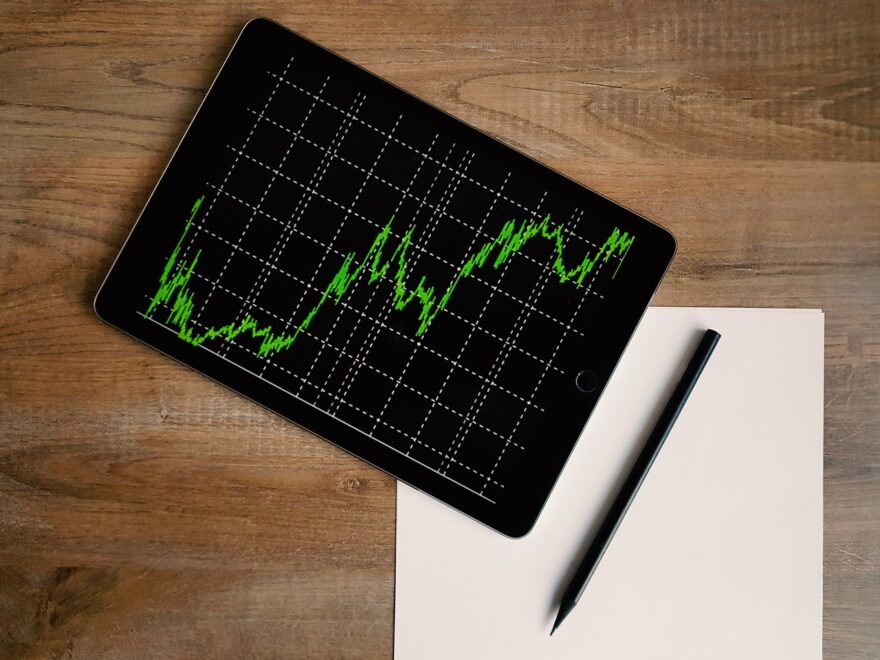Many investors today are asking, Have stocks risen too fast? We’ve had a terrific rebound off the lows of March and US stock indices are largely back in positive territory for the year. It has been quite a roller-coaster ride.
Unfortunately, uncertainty about Coronavirus remains high. We have neither a cure nor do we have the contagion under control in the US. The economic fallout from unemployment, consumer spending, and falling corporate profits remains unknown. It’s easy to make a case that the stock market has gotten ahead of itself and is being too optimistic.
That could be the case. But we shouldn’t be surprised that stocks are up. The stock market is a leading economic indicator. Traders are betting on things that they expect to happen, not waiting to respond to things that have already happened. Yes, the market is pricing in things improving. And if the market is wrong, stocks could respond negatively.
What should investors do? Run for cover? Buy gold and guns? No, I don’t think we should attempt to time the market. Trades based on what we think might happen in the next 12 or 24 months are not likely to add any value, in my opinion.
While our approach is focused on long-term results, I do not think investors should be complacent today. There are steps we are taking, without trying to bet on the short-term direction of stocks. Here are six strategies:
Stock Strategies for Today
- Rebalance. When there’s a big move in the market, up or down, rebalance to your original allocation. This creates a process to buy low and sell high.
- Re-examine your risk profile. Did the March collapse make you realize that your portfolio is too aggressive? If so, let’s take a closer look at your overall risk profile. This shouldn’t be guesswork. We use FinaMetrica, a leading Psychometric evaluation tool, to measure each client’s risk tolerance. If you should be less aggressive, now is a good time to make trades. Not when there is panic like March.
- Consider your return requirement. Two people could have the same risk tolerance. But if one has $100,000 and the other has $2 million, it is possible that they need different returns to meet their goals. One might need growth and the other might favor more stability and income. You only need to get rich once.
- Add alternative sources of return. The more we can diversify your portfolio, the better. Investments that have a lower correlation to stocks and less volatility can help create a smoother overall performance. That’s why we have taken the time to educate our clients about investments such as Preferred Stocks and Convertible Bonds.
- Look to lagging parts of the stock market. US Large Cap Growth is leading the rebound since March. Other areas are not yet back to even. For example, international stocks, or US Mid Cap Value. Today, some parts of the market are more expensive than others. If all you are doing is buying the best recent performers, you are looking in the rear view mirror. Instead, look at the fundamentals. Which stocks are less expensive today and a better relative value going forward?
- Lower your expense ratio. If your expected return on stocks is less today, a lower expense ratio will help you keep more of the market’s returns. That’s a big advantage of Index Funds. But we also like actively managed funds from companies like Vanguard, who recognize the importance of low costs.
Fixed Income
As you are worrying if stocks have risen too fast, don’t neglect your fixed income. Yields are way down in 2020. The good news is that the price of bonds has risen, which has helped your portfolio. Now, the problem is that people aren’t looking at the current yields. Money markets are yielding 0.01%. The five year Treasury Bond was at 0.22% this week. Your Investment Grade bond fund may be at 1.25% or less.
What worked in fixed income over the last 1-2 years is unlikely to produce much return going forward. We have ideas to upgrade the yields on your fixed income – from cash to intermediate bonds – while maintaining your credit quality and risk. That won’t have any impact on what stocks do, but your fixed income can create safety and income that gives you a smoother portfolio result.
The fact is that no one knows if stocks have risen too fast. It’s unknowable. We should resist the temptation to try to time the market today. We prefer to focus on what we can control: our asset allocation, good diversification, implementing portfolio alternatives, and keeping expenses and taxes low.













